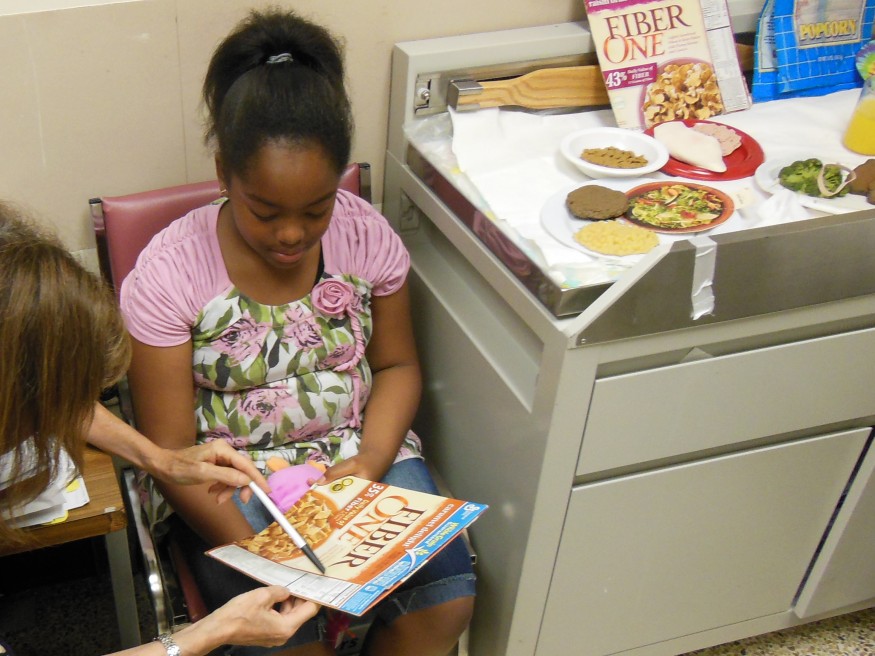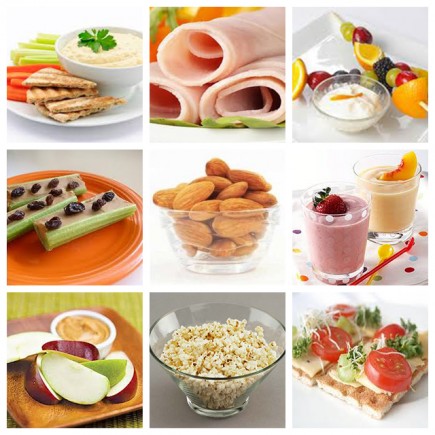Eating healthier is about making smart choices about the foods you eat and how you prepare them. You don’t have to give up all your favorite foods to live healthier. But you may have to substitute some ingredients and modify recipes. Our Nutritional Handbook can act as a guide to help you make healthy decisions about what you eat everyday.

Start Small
Change comes in bite-sized pieces. Start with these steps first:
- Eat more fruits and vegetables
- Choose healthier snacks
- Reduce portion size
- Eat less sugar and fat
- Exercise
Lifestyle Guide
Check out our blog for some great tips for healthy living.
- Eat 3 meals a day, if desired 2 snacks and 6 to 8 glasses of water
- Limit fruit juice to no more than 1 cup per day. Limit caffeine containing beverages
- Eliminate sugar laden beverages
- Limit starch to 1 serving per meal, limit starch that converts to sugar easily
- Select 3 to 5 servings of fresh fruits a day, limit dried fruit
- Select 2 or more servings of vegetables a day
- Select lean sources of proteins, 2 to 3 servings per day. Include more fish and tuna
- Select skim or 1% low fat milk, 2 to 4 servings a day. Light or non fat yogurt. Low fat hard cheese
- Select olive or canola oil, eliminate saturated, hydrogenated or partially hydrogenated oils
- Limit fast food to once a week, skip the fries, coke, shakes etc.
- Do 1 hour of physical activity a day
- Get a scale and check your weight once every other week
Pack the Pantry
Stock the cupboard with healthy, nutritious foods. If unhealthy foods aren’t in the house, it’s one less opportunity to eat them. Replace fattening foods like chips, sugary cereals, soda and juice drinks with healthier alternatives like:
- Fresh or frozen fruits and vegetables
- Limit juice to 1 cup of 100% juice a day and eliminate sugary drinks
- Lean meats
- Whole grain breads, pastas and brown rice
- Skim milk
- Nuts
- Light or non-fat yogurt
Download our Healthy Food Substitution Guide and keep it handy when you shop or cook.
Supermarket Sense
- Know how to navigate the grocery store for healthy options. Fattening, sugary foods are often easier to find than the nutritious options
- Bring a shopping list using our Cheat Sheet, Healthy Foods, Smart Choices
- Don’t shop when you’re hungry
- Shop around the edges of the store where the fresh healthy foods are
- Decipher nutrition labels using our guide, How to Read a Food Label
- Be careful of foods labeled “low fat,” “reduced fat” or “fat free” as they often have a lot of sugar
- Choose breads, cereals, pastas, and crackers with “whole wheat” or “whole grain” as the first ingredient
- Look up and down. Foods at eye level are often more expensive and less healthy
- Choose plain frozen or canned vegetables. The ones with cream or butter often cost more and are fattening
Snack Savvy
Snacking during the day helps regulate your blood sugar and keeps you from getting too hungry. If you are starving at mealtime, you will end up eating more than you should and may choose more fattening foods. Help your child understand the difference between a healthy snack, like fresh fruit, and a treat, like a cookie. Keep the healthy snacks, like carrot sticks, readily available. Try these healthy snacks:
- 1 slice of whole wheat bread/ toast/pita with 1 tablespoon of peanut butter
- A fat free yogurt with a handful of unsalted nuts and/or berries
- Celery sticks with peanut butter or low-fat cream cheese and raisins
- A small smoothie with skim milk or fat free yogurt, ice, and your favorite fruit
- Baby carrots and/or broccoli with 2 tablespoons of hummus
- An apple and 1 low-fat mozzarella string cheese
- 2 cups of air-popped popcorn with a small handful of nuts and raisins
- A few whole grain low fat crackers with sliced turkey
- For a drink, try seltzer water with fresh lemon
Power of Portions

- Kids need fewer calories than adults. So serve your children smaller portions than you do for yourself. If she’s still hungry, suggest waiting 20 minutes as it takes the brain that long to register a felling of fullness. If after that, she is still feeling hungry, try seconds of veggies or a salad.
- Don’t eat out of a package or container. Always measure out a portion first
- Use smaller plates, bowls, forks, and spoons
- Keep the serving dish in the kitchen instead of on the table. You’ll be less likely to take seconds if the food is in another room
- When packing lunches for school, use smaller containers
- If your child says he’s full, don’t insist he finish the food on his plate
Cook Right. Cook Light
Buying the right foods is only half the challenge. How you prepare them is equally important. Check out our blog for some great healthy recipes. Here are some tips on how to cook tasty meals for your family that are healthy and full of nutrients:
- Replace fatty foods with healthy ones by using our Cooking Substitution Cheat Sheet
- Try cooking with one new vegetable every week
- Serve a healthy side like steamed veggies or a green salad with dinner
- Rather than fry meat, try steaming, roasting, broiling, baking or grilling
- Substitute boneless, skinless chicken breast for dark meat
- Add flavor with different spices like garlic, thyme, oregano, or basil
Dining Out. Dining Right
Eating out can be a fun treat. Eating healthy at restaurants can be a challenge. But there are some rules you can follow that can help you eat healthier when you’re out:
- Pick healthy options with our cheat sheet, Fast Food. Healthy Options
- Avoid cheese and mayo
- Order water instead of a sugary drink
- Ask for salad dressing on the side or ask for a light dressing
- Choose grilled or broiled chicken instead of breaded or fried
- At Chinese restaurants, get brown rice instead of white, and order a steamed entrée with the sauce on the side
- Order an appetizer as your main course
- Split an entrée with a friend
- If the server brings bread, take one slice and send the basket back
- If you feel full, stop eating and take the leftovers home for later
- Skip dessert
School Smart
- Many children eat half of their meals at school. If you pack your child a lunch, it’s a great opportunity to make sure the food he eats is healthy and nutritious. If your child eats a school lunch, talk to him about healthy choices he can make in the cafeteria
- Pack healthy snacks like apples in your child’s backpack so she won’t be tempted by unhealthy vending machine options
- In the cafeteria, make healthier selections like regular milk instead of chocolate milk or fruit instead of fries
- Talk to your child’s school about their lunch program and ways it could be healthier
Get Moving!
Just like adults, kids need about 1 hour of physical activity every day. Exercise can help you:
- Get stronger muscles and bones
- Lower your body fat
- Lose weight or prevent gaining weight
- Decrease your risk of getting type 2 diabetes
- Lower your blood pressure and cholesterol
- Improve your mood
- Feel better about yourself
- Have more energy
- Sleep better at night
- Speed up your metabolism
- Get sick less often
- Concentrate in school
It might be easier than you think to get some exercise every day, even at home! Try:
- Walking or biking to school
- Dancing
- Bowling
- Jumping jacks or jumping rope
- Throwing a frisbee around
- Shooting hoops
- Walking a dog
- Following an exercise video or TV show
- Yoga
